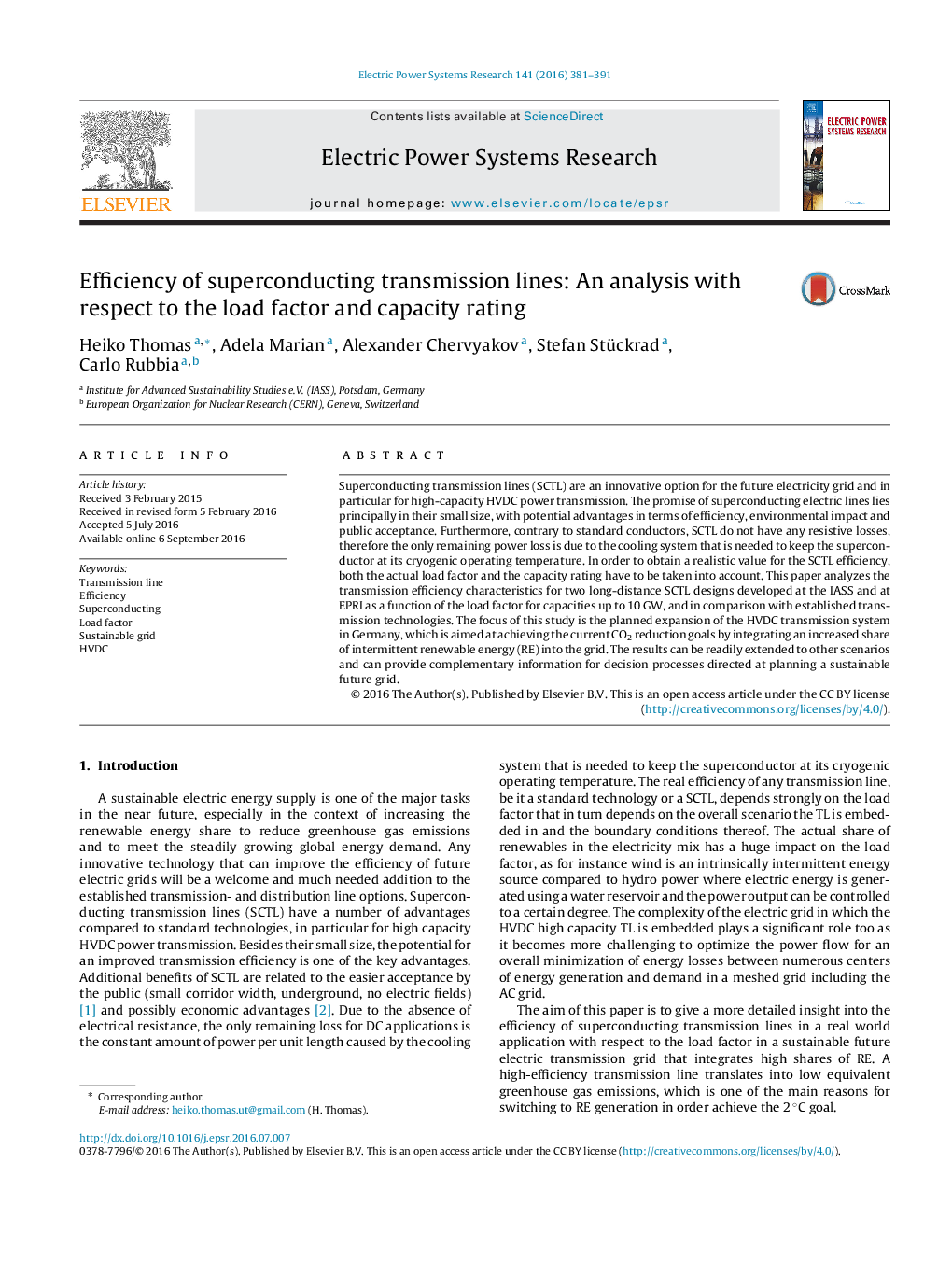| Article ID | Journal | Published Year | Pages | File Type |
|---|---|---|---|---|
| 7112496 | Electric Power Systems Research | 2016 | 11 Pages |
Abstract
Superconducting transmission lines (SCTL) are an innovative option for the future electricity grid and in particular for high-capacity HVDC power transmission. The promise of superconducting electric lines lies principally in their small size, with potential advantages in terms of efficiency, environmental impact and public acceptance. Furthermore, contrary to standard conductors, SCTL do not have any resistive losses, therefore the only remaining power loss is due to the cooling system that is needed to keep the superconductor at its cryogenic operating temperature. In order to obtain a realistic value for the SCTL efficiency, both the actual load factor and the capacity rating have to be taken into account. This paper analyzes the transmission efficiency characteristics for two long-distance SCTL designs developed at the IASS and at EPRI as a function of the load factor for capacities up to 10Â GW, and in comparison with established transmission technologies. The focus of this study is the planned expansion of the HVDC transmission system in Germany, which is aimed at achieving the current CO2 reduction goals by integrating an increased share of intermittent renewable energy (RE) into the grid. The results can be readily extended to other scenarios and can provide complementary information for decision processes directed at planning a sustainable future grid.
Related Topics
Physical Sciences and Engineering
Energy
Energy Engineering and Power Technology
Authors
Heiko Thomas, Adela Marian, Alexander Chervyakov, Stefan Stückrad, Carlo Rubbia,
